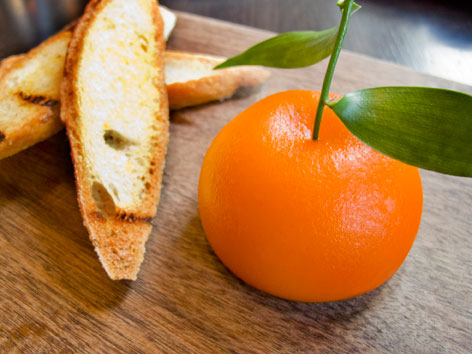Ethiopian Chicken Stew (Doro Wett)
Ethiopia
amantour
guides you to the best local dishes & drinks in
125+ cities. See map now



Now on Amazon.com!
Download our new London Food & Travel Guide to your Kindle, smartphone, or tablet and get the inside scoop on the best British foods in London, plus a bonus restaurant guide and 7-day EYW itinerary. $3.99
EYW wants your food photos!

EYW wants your food stories!
Hey guys I am a traveler who loves to explore different places around the world. I often visit outside of Canada, So whenever I have to travel around the world I always book my flight tickets from the... Read more


What: The thought of British historical foods may not inspire much excitement, but combined with the creative modernist ways of English chef Heston Blumenthal (of the three-Michelin-starred Fat Duck in Bray, 30 miles (48 km) west of London) it’s downright mind-blowing. At his latest (one-Michelin-starred) restaurant, Blumenthal puts a refined contemporary spin on traditional British cuisine, the kind of forgotten foods that go back hundreds of years, with a helpfully annotated menu acting as tour guide of the country’s gastronomic past. It’s a must for any student of British cuisine—as well as anyone who loves damn good food.
Note: This is one of few EYW entries to focus exclusively on one restaurant, but in terms of quality—the food, the culinary techniques, and especially the restaurant’s respectful tribute to England’s culinary heritage—we think it’s deserving.
Where: Since opening in early 2011, Dinner by Heston Blumenthal (Mandarin Oriental Hyde Park, 66 Knightsbridge, map), inside the stately Mandarin Oriental hotel overlooking pretty Hyde Park, has achieved what many would have thought impossible: turning truly old-school English food into something beautiful, modern, and unquestionably delicious. The dishes aren’t, of course, faithfully re-created to match their centuries-old kin; they’re given a contemporary, often exhilarating Blumenthal update, with their historic inspiration left firmly intact. Every item on the menu, which was devised with the help of a historical researcher, is accompanied not only by a brief description of its components, but also an approximate date of origin—hay-smoked mackerel (circa 1730), black foot pork chop (c.1860)—and further annotation on the recipe’s source of inspiration, generally an ancient dictionary or cookbook.
Good to know: Ashley Palmer-Watts of the Fat Duck Group is the head chef at Dinner by Heston Blumenthal, and the one you’re likely to see inside the glass-walled kitchen.
When: Mon-Sun: lunch, noon-2:30pm; dinner, 6:30pm-10:30pm. You’ll save some money by going at lunch during a weekday, when you can order à la carte or a seasonal £38 three-course set lunch. Reserve in advance.
Order: Pictured is one of the restaurant’s signature dishes: meat fruit (£17.50), dating to circa 1500. Its inspiration, according to staff, was the “illusion fruit” of yore—when, after medieval dinner parties, the hosts would serve a basket of fruit, one or two of which would be cheekily filled with minced meat. Here it’s an elegant meat-stuffed “mandarin”: a dreamy, mousse-like parfait of chicken liver, foie gras, cream, and brandy, molded and frozen and dipped into mandarin gelatin, served with buttered grilled bread. (Its real-looking textural dimples, it turns out, were a happy accident.) Light as air, with subtle mandarin sweetness, it’s fantastically delicious.
Another appetizer must is the salamagundy (£17.50; dating to c.1720), which one server described as a hodgepodge warm salad (traditionally including poultry and vegetables) from the days before cold salads were common. Included in said hodgepodge: four chicken oysters—those sweet little nuggets of flavor-rich dark meat from the back of a chicken—slivers of bone marrow, leafy greens, roasted salsify, and horseradish puree. If it sounds odd, trust that those ingredients sing on the same plate. It’s a wonderful dish.
The ragoo of pigs’ ears (c.1750), off the set lunch menu during our visit, was perfect: a dark, meaty mess of tender shredded ears, sweet onion, and parsley over toast. The roast quail (c.1590), a blast from the past enjoying a comeback in London’s gastropubs, was four delicious pieces of game bird in a tarragon-rich sauce with smoked parsnips and a silky potato puree. No matter what you try—the powdered duck (c.1670), the spiced pigeon (c.1780)—save room for dessert: The tipsy cake (c.1810), like a creamy hot bun with spit-roasted pineapple, is the perrenial favorite; we liked the sweet-and-savory brown-bread ice cream (c.1830) too, atop gooey salted butter caramel. (Naturally, even the equipment is historically based: The spits that roast the pineapples are part of a one-of-a-kind pulley system modeled after a 16th-century design for the Royal British Court’s kitchens.)
©2025 Eat Your World, LLC - All Rights Reserved